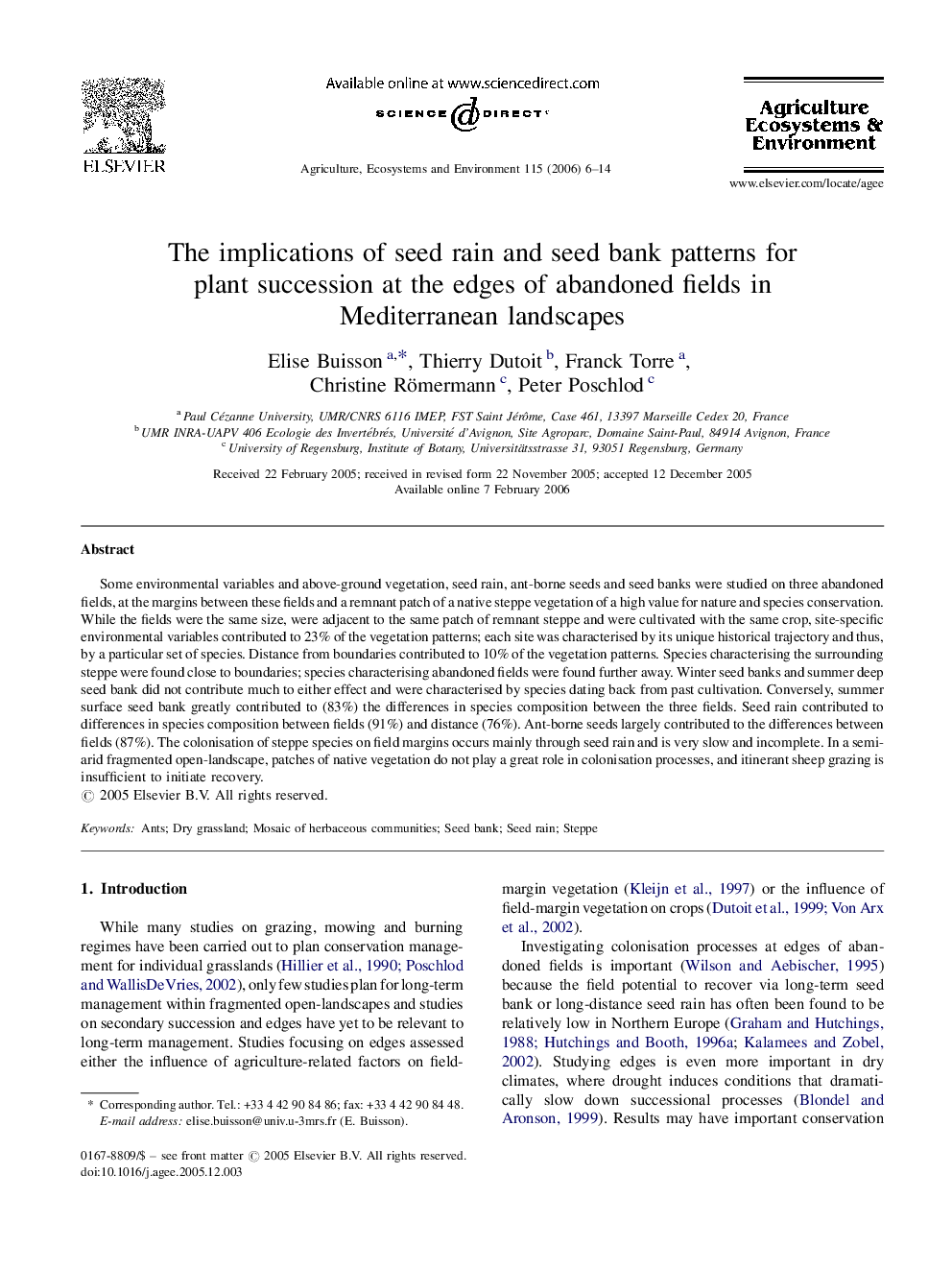| Article ID | Journal | Published Year | Pages | File Type |
|---|---|---|---|---|
| 2415873 | Agriculture, Ecosystems & Environment | 2006 | 9 Pages |
Some environmental variables and above-ground vegetation, seed rain, ant-borne seeds and seed banks were studied on three abandoned fields, at the margins between these fields and a remnant patch of a native steppe vegetation of a high value for nature and species conservation. While the fields were the same size, were adjacent to the same patch of remnant steppe and were cultivated with the same crop, site-specific environmental variables contributed to 23% of the vegetation patterns; each site was characterised by its unique historical trajectory and thus, by a particular set of species. Distance from boundaries contributed to 10% of the vegetation patterns. Species characterising the surrounding steppe were found close to boundaries; species characterising abandoned fields were found further away. Winter seed banks and summer deep seed bank did not contribute much to either effect and were characterised by species dating back from past cultivation. Conversely, summer surface seed bank greatly contributed to (83%) the differences in species composition between the three fields. Seed rain contributed to differences in species composition between fields (91%) and distance (76%). Ant-borne seeds largely contributed to the differences between fields (87%). The colonisation of steppe species on field margins occurs mainly through seed rain and is very slow and incomplete. In a semi-arid fragmented open-landscape, patches of native vegetation do not play a great role in colonisation processes, and itinerant sheep grazing is insufficient to initiate recovery.
